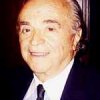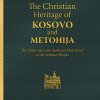Maglich received his Bachelor of Science degree from the University of Belgrade in 1951, his Master of Science degree from theUniversity of Liverpool in 1955, and his Ph.D. in high-energy physics and nuclear engineering from the Massachusetts Institute of Technology in 1959. Upon receiving his Ph.D., Maglich joined Dr. Louis Alvarez's research group at Lawrence Berkely Lab. During this time, he participated in the discovery of the omega meson and invented the "sonic spark chamber".
.Between 1963 and 1967, he worked at the European Organization for Nuclear Research (CERN) in Geneva, Switzerland. While conducting research at CERN, he invented the "missing mass spectrometer".
In 1967, Maglich joined the faculty of the University of Pennsylvania, as well as being visiting faculty at Princeton University. In 1969, he became Professor and Principal Investigator for High Energy Physics at Rutgers University. In 1974, he left academia to pursue his research in the private sector.
Maglich first rose to prominence in his field working on a team at the University of California's Lawrence Radiation Laboratory analyzing liquid hydrogen bubble chamber data from Berkeley's bevatron accelerator. The team, which also included Luis W. Alvarez, Dr. Arthur H Rosenfeld, and M.L. Stevenson, discovered the first solid experimental evidence for the existence of the ω meson resonance. (In 1968, Luis Alvarez was awarded a Nobel Prize for this and related work.) Maglich's contribution to this discovery led to him receiving the White House Citation from President John F. Kennedy and being named an honorary citizen in Switzerland by the President of the Swiss Confederation.
Toward the end of the 1960s, Maglich developed the precetron, a self-colliding particle beam accelerator for studying pion-pion collisions. Shortly thereafter, in the early 1970s, the precetron design formed the basis for Maglich's "migmatron" concept of a self-colliding ion beam fusion reactor.
In his attempts to raise funding for his migma research, Maglich has been associated with a string of business ventures. In 1974, he formed Funsion Energy Corp. From 1985 to 1987, he was CEO and Principal Investigator of Aneutronic Energy Labs of United Sciences, Inc. at Princeton, a research firm also known as "AELabs." It was during this time that Maglich worked under a research grant from the United States Air Force to attempt to develop his migmatron concept into a compact power source for spacecraft. From 1988 until 1993, he was CEO of Advanced Physics Corporation.
In 1995, Maglich founded HiEnergy Microdevices, which later became HiEnergy Technologies, Inc., a manufacturer of neutron-based bomb detection equipment. He continued to occupy various positions with that company until being terminated for cause. HiEnergy Technologies declared bankruptcy in 2007. After leaving HiEnergy Technologies, Maglich became president of Centurion Enterprises Corporation.
Maglich has four children: Angelica (born 1989) and Aleksandra Maglich (born 1991), from a prior marriage to UCLA media artist Victoria Vesna; also Marko (born 1960), Ivanka (born 1961).
From Wikipedia (Serbian Wikipedia)
New revolutionary method of early cancer diagnostics
INGENIOUS INVENTION OF PROF DR BOGDAN MAGLIĆ
In Huston, USA, at the First Global Congress on Nano Medicine, a revolutionary novelty in early cancer diagnostics by means of a diagnostic probe – Oncosensor was presented. Multidisciplinary scientific team that consisted of physicists, biologists and physicians was headed by a distinguished American scientist of Serbian origin and a member of the Serbian Academy of Sciences and Arts Dr Bogdan Maglić.
Oncosensor is a device that detects in a completely new and extremely simple manner malignant cells just after they emerge. It is a painless method of cancer diagnostics that detects malign cells without any operations, intravenous fluid and biopsy, with incomparably higher preciseness than the existing so-called „imagers”. The imagers have recorded an unacceptable percentage of wrong diagnoses in differentiating between healthy and malignant tumors. However, Oncosensor's specificity reaches 98%, which is better than surgical biopsy.
Oncosensor sets the diagnosis by bombarding DNA nucleotides and tissues with femto-neutrons of incredible speed that detect oxygen difference between a tumor and the adjacent normal tissue. Hypoxic cancerous tumors contain 50% to 90% less oxygen than healthy tissue. The device detects the oxygen difference between malignant and healthy tissue and accordingly diagnoses cancer. The method is named Differential Femto Oximetry, and the patented diagnostic probe – Oncosensor, and they are developed through collaboration between the California Science & Engineering Corporation (CALSEC) and University of California Irvine College of Medicine.
Prof Dr. Nisar Syed of The Long Beach Cancer Institute and Chancellor of American College of Radiation Oncology said at the aforementioned Congress that Oncosensor has the potential to instantly facilitate eradication of malign tumors by heat treatment known as hyperthermia, because it directs the surgeon to the area with the least oxygenated tissue.
The project co-author Orhan Nalcioglu, Director of the Center for Functional Onco Imaging of the UCI College of Medicine said at the Congress in Huston that the objective of further researches will be the treatment of malignant diseases by this method. The experiment will be carried out by making animals inhale Carbogen, an oxygen-enriched harmless gas whereby malignant tumors would be nourished with oxygen and transformed into healthy tissue. This is the emergence of FEMTOMEDICINE – new discipline of biomedical sciences which has been dealt with for years by the team led by Dr. Bogdan Maglić, and the obtained knowledge was originally utilized for military purposes.
„Femto Oximetry“ is a method that has also the potential to forewarn of a stroke, Alzheimer disease and cardiovascular diseases which are also marked by oxygen insufficiency.
Dr. Maglić is a Chief Technology Officer of the scientific center CALSEC in California, and a renowned American journal “Fast Company“ included him into “50 Champions of Innovation“.
CALSEC scientific team includes several other Serbian scientists, among them Aleksandar Šuvaković and Ana Radović, molecular biologist. During his engagement in this globally important project Dr. Maglić maintained constant consultations with his colleagues in the Serbian Academy of Sciences and Arts.
On the occasion of this revolutionary invention, “CNN” TV network broadcast a 5-minute film as part of its program called Avant-garde Diagnostic Technologies.
From SANU web-site





